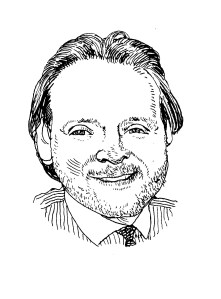If you are a frequent reader of Concrete Thoughts, you know that I often attempt to connect the dots between economics, politics and real estate. And since the so-called Great Recession began, the relationships among the three have never been more pronounced.
The health of our commercial real estate market can be greatly influenced by policy changes that legislators enact. The implications for our market on the political climate can be significant and, in 2012 and 2013, two elections could have profound ramifications for us.
 The first is the national elections this year, which include not only the race for president but battles for control of the House and Senate. The second, and perhaps more important for those of us in New York City, is the race for mayor.
The first is the national elections this year, which include not only the race for president but battles for control of the House and Senate. The second, and perhaps more important for those of us in New York City, is the race for mayor.
Dysfunction and polarization in Washington reigns supreme: We have Republicans unwilling to consider raising taxes and Democrats unwilling to reform unsustainable entitlement programs.
While campaigning, the president pledged to bring a new era of bipartisan cooperation to the nation’s capital. Unfortunately, the opposite has occurred. If anything, Washington is now more polarized than at anytime in the last several decades. The Simpson Bowles Commission was formed to come up with bipartisan solutions to our economic dilemmas and came up with a pragmatic combination of tax increases and entitlement reforms.
However, all of the work of the commission was completely ignored by the administration, the result of which is that, for the past three years, there has been no federal budget adopted. Presently, the revenue of the U.S. Government is $2.6 trillion per year and we are spending $3.9 trillion. This imbalance is clearly unsustainable.
Our debt-to-GDP ratio has surpassed 100 percent and that is only considering the way the government presently accounts for our debt, which grossly understates our liabilities. Off-balance sheet liabilities, such as Fannie Mae and Freddie Mac obligations, would raise this debt-to-GDP ratio to a level in excess of 150 percent.
We see what is happening in Europe, notably in Greece and Spain, and we have true debt-to-GDP ratios that are in excess of what those countries are facing. Given the misplaced and unprecedented government intervention in recent years, our economic recovery has been the worst in terms of its performance since the Great Depression.
For instance, after the recession of 2001, it took four years to regain all of the jobs that were lost. In the nearly four years since this present recovery began, we have recovered just 25 percent of our jobs. GDP growth in the 2009 and 2010 period was completely based on government intervention, with policies such as the Cash-for-Clunkers program and the First Time Home Buyers Tax Credit, along with trillions of dollars of stimulus money.
Notwithstanding these policies, GDP growth and job creation remain lackluster; consequently, “sluggish” is often the most used adjective to describe the present state of the economic recovery. The reality is that until long-term fiscal reforms are enacted (and this will take significant political will and courage on someone’s part), it is difficult to see how a booming economy can return.
On the local front, New Yorkers have been spoiled under the leadership of Mayors Giuliani and Bloomberg. While certain things could have been done differently, they were generally pro-business and pragmatic when it came to the long-term health of our local economy.
Prior to this period, when I started working in New York City in 1984, after 7 p.m. the streets were lined with drug dealers and hookers and crime was rampant. Squeegee men were visible on many corners and the quality of life was much less desirable than it is today. I vividly remember walking west on 42nd Street from Madison Avenue to the Port Authority at the end of each day. I literally had to zigzag between the north side and south side of the street as I crossed each avenue to increase the probability of making it to the Port Authority without getting mugged.
These are distant memories for most of us. But a return to Dinkinsville is not something anyone wants. While it is far too early to make any predictions (not too long ago Anthony Weiner was a shoe-in as our next mayor), it appears the present slate of mayoral hopefuls endorse policies more closely aligned with Dinkins than with either Giuliani or Bloomberg. Quality of life in a city this large can change very rapidly, which is a key variable for our underlying real estate fundamentals. Real estate tax policy, wage mandates and collective bargaining agreements all have profound implications for commercial real estate.
We all should be watching both of these elections very carefully as each could impact the way we live our lives, both personally and professionally, over the next few years, more than we can presently imagine.
rknakal@masseyknakal.com
Robert Knakal is the chairman and founding partner of Massey Knakal Realty Services and in his career has brokered the sale of more than 1,200 properties, having a market value in excess of $8 billion.



